“[W]hen I was younger, I was afraid of something that didn't make a lot of sense. But now I'm not. I have nothing to worry about. It doesn't matter.” -Maurice Sendak
Well, here in the USA we're all still reeling from the loss of an hour for daylight savings time, and in the meantime, I've been reeling here at Starts With A Bang as I sift through your comments. Maybe there was something special about this week, but you weighed in with hundreds of comments on the following:
- Is this a hole in the Universe? (for Ask Ethan),
- Pluto's color variations finally make sense (for Mostly Mute Monday),
- Science is not faith-based, no matter what the Wall Street Journal says,
- Could right-handed neutrinos solve the dark matter puzzle?,
- Gravitational waves will show the quantum nature of the Universe, and
- Could the LHC make an Earth-killing black hole?
This past week saw me give a public talk on the subject of how we discovered the Universe extended far beyond the galaxy, with a huge, 1-hour Q&A afterwards. Watch the whole thing here!
From Robert Nemiroff on the image, above: "Maybe NASA should have a site that explains images like this."
This is the ultimate burn! Robert Nemiroff, for those of you who don't know, is one of two people (along with Jerry Bonnell) who runs NASA's astronomy picture of the day (APOD) site. Nemiroff has featured Barnard 68 no fewer than eight times, from 1999 through 2014. APOD is one of the longest-running sites in my bookmarks, and if you don't check it out nearly daily, you're missing out.
But aside from that, perhaps NASA should have a site out that debunks the non-scientific nonsense that many "science communication websites" are putting out. NASA? Are you there?
From See Noevo going way off-topic: "If the Big Bang is for real, shouldn’t there be an ever-expanding empty space where it happened? Kind of like this hole?"
No. If the Big Bang is for real (which it is), there should be an ever-expanding spacetime that contains matter and energy that's roughly uniform on large enough scales, with imperfections and inhomogeneities that grow over time. Kind of like this Universe.
From Andromeda41, hating on the Big Bang: "I have been hearing the same generic explanation for. .50.years.ie I’ll ask it again. Start with the singularity. Now start inflation. Now refer back to my beginning. How much sense does it make to say there is no center to the universe."
Why do you start with a singularity? All we observe is the last 10^-33 seconds (or so) of inflation. What happened prior to that? How long did inflation last? Forever? If not, what came before it? Was there a beginning to space and time (a singularity) or not?
Even if the answer to that last question is "yes," that's evidence for an origin, not a center. That's evidence for all of space and all of time originating from a single point; because of the way mathematical maps work, that means that every point in the Universe can lay equal claim to being at the center. That's how much sense it makes.
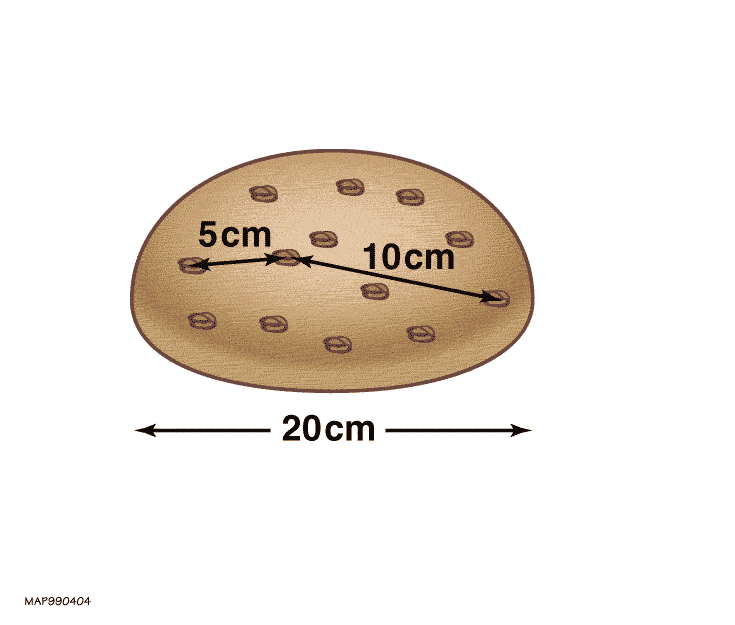 Image credit: NASA / WMAP science team, via http://map.gsfc.nasa.gov/universe/bb_tests_exp.html.
Image credit: NASA / WMAP science team, via http://map.gsfc.nasa.gov/universe/bb_tests_exp.html.
From CFT, misunderstanding and attacking when they should be learning, "Michael,
I couldn’t care less about where you work,
or how educated you think you are,
Your raisin bread analogy was utter dreck."
No, the raisin bread analogy is absolutely brilliant. In fact, it's one of not just Michael's and mine but cosmologists' all over the world favorites. If you want to conceive of space and how it expands, and how the galaxies within it have expanded since the hot Big Bang, there is no better analogy that I know of. If you want to talk about a different set of timescales, you need to be more specific. But since the end of inflation and the hot Big Bang, the raisin bread analogy is absolutely valid. In fact, if you listen to the video atop, you can hear me talk about it in the Q&A session!
From richard mitnick on image credits: "You credited ESO in [this] article but failed to tell us which ESO assets were used in this work. If assets of an astronomical organization are involved, they should be credited. As an ardent supporter of ESO, I would like to know which ESO assets were involved."
I give the credit that ESO asks for on each ESO image that I used. If you want a link to the ESO website with the images, you can go here: https://www.eso.org/public/news/eso9934/. But if you want to support ESO, perhaps you should see how they credit themselves and ask to be credited worldwide. Then perhaps you can be ardent in being informed about ESO and their image policies, too.
From Denier on a hypothetical in cutting college funding: "In this case, a contraction of the money supply available to schools would cause administrators to lose their jobs, educators to lose their jobs, services to be cut, attendance to drop, and tuition prices to fall until a new equilibrium was reached."
What's interesting about the Finland example, where their flagship University had their funding cut by about 15%, is that many administrators lost their jobs, few educators lost their jobs, attendance didn't drop and tuition prices didn't change. In other words, that isn't what happened. I offer the possibility that if you want to affect a different change -- administrative cuts, increased professor autonomy and salary and cuts in the cost of tuition -- student/faculty unions could create that change as well. That's all.
From Axil on Pluto... no, just kidding, on Cold Fusion, what else?: "All this new observational evidence points to the existence of a billions of years long chemical production of nuclear heat in a cold environment. Cold fusion exists without any doubt. LENR’s proof of concept is establish without any doubt. It’s just a matter of finding how the production of cold nuclear energy works."
So for five years now, Axil, you've been telling me about LENR and I've been asking you for a working device. "Any day," you've been telling me. It's been nearly 2,000 days. When will you be convinced -- or will anything about this non-reproducible experimental suite of results ever convince you -- that you've been taken in by a fraudster?
From Richard Enkgraf on science and faith: "Faith is a position which admits no conceivable alternative. People of faith tend to shape their conception of the universe (including scientific evidence) to fit their belief, instead of building up a view of the universe based upon objective evidence. Bertrand Russell defined faith as a belief which cannot be shaken by contrary evidence."
More specifically, I'd like you to consider -- particularly those of you who claim that science requires a faith as well -- that there is a big difference between faith as a religion uses it and an assumption as science uses it. When you make a scientific assumption, you do absolutely everything you can to check it for self-consistency, and to look for any evidence that might run counter to your assumption. You might not be able to ever prove it, and you might be building a house of cards atop it if it's an invalid assumption, but you have to assume something in order to get started.
Rest assured that if that assumption -- any assumption -- is ever forced to confront robust evidence that throws it into doubt, it will be the duty of any and all scientists to readdress and perhaps even throw out those assumptions. That fundamentally differs from faith.
Image credit: public domain / US Government, of a schematic of how LIGO works. Modifications made by Krzysztof Zajączkowski.
From Nils-Erik Thorén on the assumptions that go into science: "Science rests on the axiom that there exists a world independent of any observers."
Since the development of quantum mechanics, that is untrue. You can call it axioms, assumptions or faith, I suppose, but I've run across three common arguments that "science is faith, too!" in these comments. They are: that the Universe is logical (it doesn't have to be), that the laws of nature are constant throughout space and time, and that our perceptions, measurements and observations of reality actually reflect reality.
The first one -- that the Universe is logical -- is not actually an assumption! The Universe could be completely illogical, where things happened uncaused all-of-a-sudden and phenomena were completely inexplicable all the time. Yet the Universe we observe is quite consistent with logic and every observation we've made is inconsistent with the "illogical" alternative. It has often been challenging to find the mathematical/logical formalism that describes the laws it obeys, but these laws seem to be logically self-consistent. If it were otherwise, we'd see otherwise.
The second one is not even something scientists always assume! The coupling strengths of the fundamental forces (three of them, anyway) are known to change with energy, and hence with time, since the Universe was more energetic in the past. What scientific observations and measurements tell us is that the laws of nature and the fundamental constants actually are constant in space and time to a very specific level of accuracy. But this, again, is not an assumption, but rather a conclusion. We may hypothesize that these laws and constant are completely invariable, but this is a hypothesis that is subject to scientific scrutiny and refinement; it is not an inherent assumption.
And the last one, I'll concede, actually is an assumption: we assume that what we claim, perceive and measure as "reality" is actually real in some sense. The alternative to this is known as solipsism, and could be illustrated by René Descartes' argument of the "brains in vats" scenario. So we can either assume that reality is real, and that we can learn something meaningful about the Universe, or we can assume that it is not, and that we can learn nothing meaningful about anything. So yes, all of science is predicated on the assumption that reality is, in some sense, real.
If that is what you call faith, then we all have (or don't have) faith in that sense. But that is a far cry from what Emerson was arguing!
In fact, I believe lots of others express this same sentiment in their own words, such as those of Orion:
"Science doesn’t require faith, although it does require a priori. It simply makes statements regarding the world we apparently live it. It doesn’t state that the world actually exists. If this is all an elaborate simulation or some god toying with just one person, science seeks to describe the universe, real or imagined. Science, almost by definition, makes no claim about things outside the universe its trying to measure. It makes no claim about the supernatural — which by definition is outside the measurable, natural world. But, as such, the supernatural acts outside of the natural world and does not affect it. If it did affect the natural world, it wouldn’t be supernatural, it would be natural."
I could have made the entire 133 (and counting) comment thread on this article all of our comments of the week, but there are other interesting topics to go onto as well!
From Denier on right-handed neutrinos: "The neutrino sector has always been curious and the article brings up 2 questions.
1 – We have already demonstrated an ability to detect neutrinos. What is it that causes the right-handers to escape the same traps that catch the left-handers?
2 – With electrons I know it is possible to change spin orientation via pulsed electron paramagnetic resonance. Would it be theoretically to do the same thing with a neutrino and watch it spontaneously gain a billion times its original mass?"
First off, both of these were answered very in-depth (and smartly, I might add) by Michael Kelsey, who states:
1) The detection problem is that right-handed neutrinos won’t interact via any known (i.e., observed and measured) interaction. Regular neutrinos interact via the “weak force”, that is, through the exchange of W+/- or Z0 boson (in the same way that electric charges interact through the exchange of photons). Those interactions _maximally_ violate parity — the W and Z only interact with left-handed leptons (neutrinos, electrons, muons, or tau leptons), not at all with right-handed leptons.
If right-handed (so-called “sterile”, because they don’t interact) neutrinos exist, then they are either primordial, or produced as particle-antiparticle pairs from some high-energy interaction.
2) No. Electrons can flip their spin electromagnetically because EM is parity symmetric (it operates identically on left- and right-handed charged particles). Neutrinos don’t interact electromagnetically, and thus can’t have their spins flipped that way (or any other way, since they only interact via a maximally parity-violating left-handed force, see above).
I'd like to expand a little more, if I may. In principle, there's no reason that all neutrinos should be left-handed and all anti-neutrinos should be right-handed, particularly if they do have mass, and therefore can move non-relativistically. "Handedness" is normally defined for massless particles only, because they "spin" in a particular direction relative to their direction-of-motion. If you move at less than the speed of light, then you ought to be able to "boost" (via special relativity) and turn a left-handed particle into a right-handed one, simply by changing your reference frame. Yet we never see a right-handed neutrino or a left-handed antineutrino under any circumstances, so far. Weird, right?
So does that mean there are no right-handers? Does it mean that neutrinos are totally different than anything else we known of? (I mean, they are, but this is a new kind of weirdness.) The right-handed ones I've talked about are super-heavy -- on the order of ~10^15 GeV or so -- and may or may not exist in any appreciable abundance in the Universe. They may be unstable and have decayed away, or they may be stable with incredibly suppressed interaction cross-sections.
But even if you were able to flip the spin of a low-energy neutrino, you wouldn't turn it into a heavier one. We're talking about two fundamentally different particles now, with the broken GUT symmetry, when we speak of left-handed (light) and right-handed (ultra-heavy) neutrinos.
From Omega Centauri on gravitational waves from inflation: "BICEP came to grief because there was another source (IIRC polarized stuff in galactic mag fields), that mimicked the signal they were looking for. So it seems that more than just sensitivity of the equipment is required. You also have to be able to rule out more mundane causes for the signal."
The big problem was that BICEP2 claimed to know the foregrounds from Planck before Planck released their maps of the galactic gas, dust and light polarization. They "cheated" to get their results out fast, and they got burned super bad. Yes, you have to rule out your systematics, but that means having to rely on the data that actually exists, not inferring it from a pre-release map. They blew it big-time, and hopefully that mistake will pave the way for all future polarization mapping experiments to not make a similar one.
And finally, from Elle H.C. on the LHC's potential to make an Earth-destroying black hole: "This is somewhat misleading because those particles (Ultra-High Energy cosmic rays) that are so much greater are most likely iron nuclei that collide with other nuclei in the upper layers of our atmosphere. What is going is a whole collections of protons, that have roughly the same velocity as those in LHC, colliding with and other bunch of protons. This particle is thus not so much an elementary particle but a whole group. The impressive number of 100,000,000 greater is because of the large shower output; but when you zoom-in the one on one collisions are close to the same energy region as those at the LHC."
No, they are not most likely iron nuclei; they are most likely protons, which make up 90%+ of all cosmic rays. In fact, the charge reconstruction on UHECRs show very few nuclei heavier than helium, so I don’t know why you’d assume iron to be the highest-frequency and highest-energy cosmic rays at all?
What's even stranger is that the LHC is also proton-proton collisions, and if you did the center-of-mass transformation of an iron-56 nucleus and its collision with an atmospheric proton, you'd find that the energies from cosmic rays were still many orders of magnitude (about a factor of 100,000) larger in energy than the LHC's maximum energies. So your statement is patently untrue.
Granted, my experience with this is that there is nothing I can logically say that will dissuade a fearful person who doesn't understand the LHC from their fears, but logically, I am professionally telling you that there is not a risk to Earth, space, time or you or me from the LHC's collisions. Fear or not as you like, but that's on you, not on science.

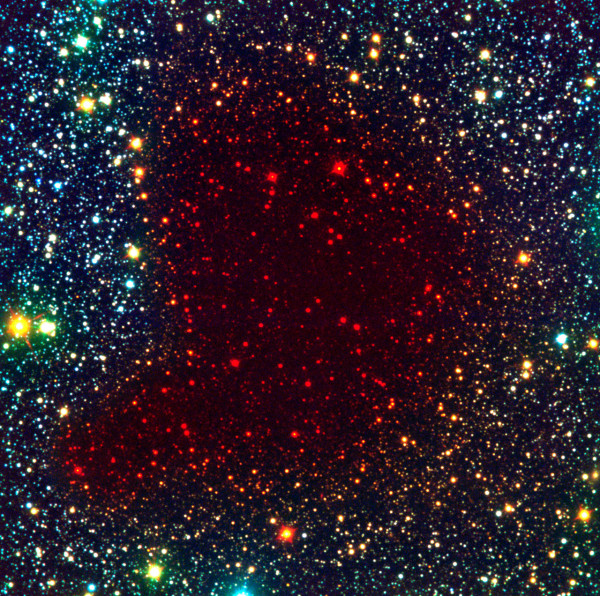
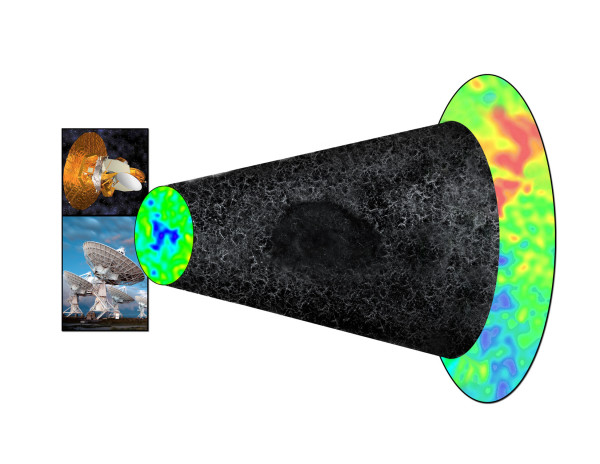
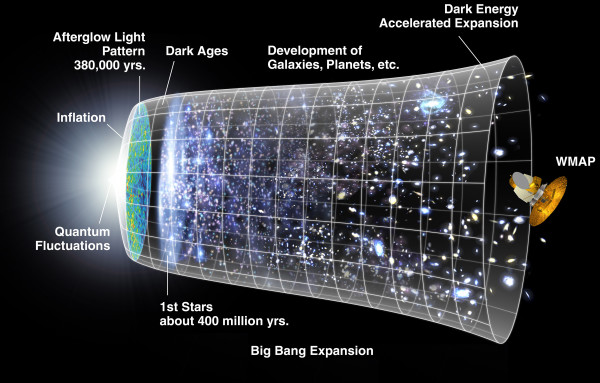
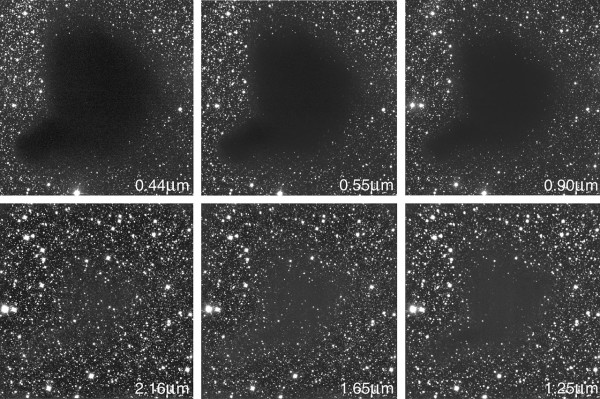

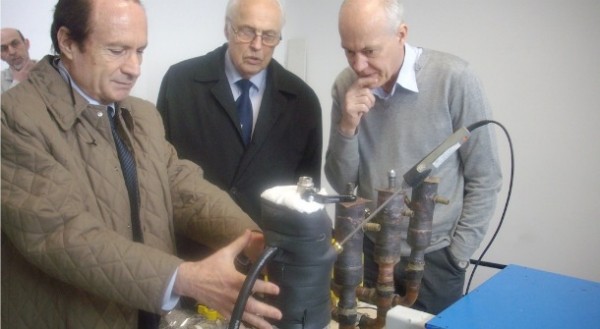
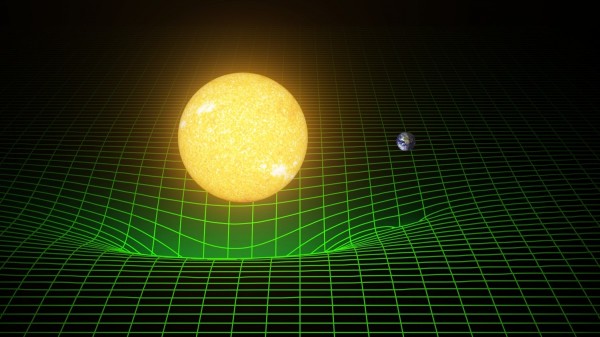
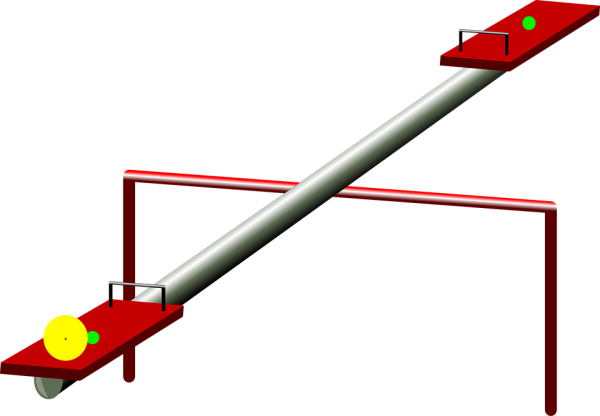
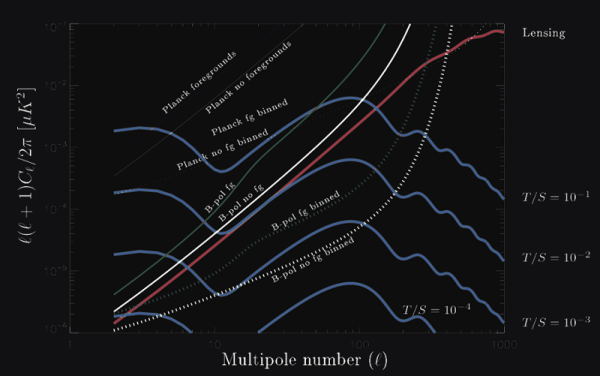
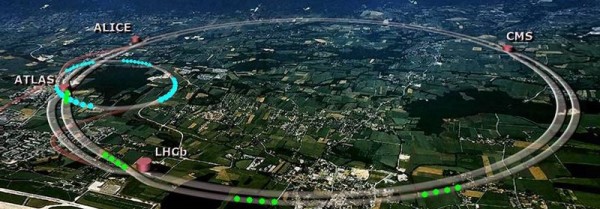
@Ethan
I get what you are saying, but I also know it has been tried before. Using unions to impose a price control on a segment of the economy is called Syndicalism. It was tried many times in both limited segments and entire economies back in the early 1900's. As with all collectivism on that scale, it is not viable over the long term and doesn't work even in the very short term without a good dose of authoritarianism. It has been out of favor ever since Benito Mussolini's corpse was hung on meat hooks in a town square and Fascism became a term so tarnished that it is now used to describe any disagreeable authority.
I know that is lightyears from anything you were suggesting, but all I'm saying is that road you've laid out and paved with your good intentions.....It doesn't lead to where you think it does.
As far as Finland goes, if the attendance isn't negatively impacted then neither will be the tuition prices.
At this point it is probably best to just agree to disagree on the effectiveness of the proposed solution even if we agree that something should be done.
@Denier #1: And that, my friends, is how to present a difference in interpretation. Politely and respectfully. No name calling, no profanity, no one-up-manship.
I'm not sure I agree with you (I lean a bit to the left myself), but I appreciate your argument and presentation.
Sad that it's sufficiently unusual to be noteworthy, but that's the Intertubes fer ya :-/
I can't believe I missed this communiqué from Protopostmodernland before.
@Ethan: "you’d find that the energies from cosmic rays were still many orders of magnitude (about a factor of 100,000) larger in energy than the LHC’s maximum energies. So your statement is patently untrue."
The energy released during UHECR-collisions is only 50 times higher than the LHC because of so called 'effective energy':
“The energy of this particle (UHECR) is some 40 million times that of the highest energy protons that have been produced in any terrestrial particle accelerator. However, only a small fraction of this energy would be available for an interaction with a proton or neutron on Earth, with most of the energy remaining in the form of kinetic energy of the products of the interaction.
The effective energy available for such a collision is the square root of double the product of the particle's energy and the mass energy of the proton, which for this particle gives 7.5×10^14 eV, roughly 50 times the collision energy of the Large Hadron Collider.”
https://en.wikipedia.org/wiki/Ultra-high-energy_cosmic_ray
--
Note, when you have a Cosmic ray that is an iron nucleus (atomic number 23) traveling at the same velocity as the particles of the LHC, colliding with an other nucleus, than you get an energy release that is ~56 times higher than the proton on proton collisions at the LHC.
Mh, not sure if this comment got through:
@Ehtan: No, they (UHCRs) are not most likely iron nuclei
According to this article in Nature it probably are:
http://www.nature.com/news/2010/100222/full/4631011a.html
Cosmic-ray theory unravels
”… they are seeing small air showers that are indicative of iron nuclei, rather than the larger showers that point to protons.”
and
"The group revealed new data that weaken the link between the high-energy particles and the AGN (active galactic nuclei) ... the team has found evidence that these highest-energy cosmic rays might be iron nuclei, rather than the protons that make up most cosmic rays.”
"Using unions to impose a price control on a segment of the economy is called Syndicalism."
And incorporation is just another method of unionisation, this one for the haves. But in today's capitalism, that's 100% allowed, even lauded. And anything that doesn't support it is vilified as being "against the consumer". Consumers who have to work to be able to afford to consume, therefore are the ones who are against the consumer who works and wants to proffer a better option for themselves.
Mike, please reflect on the difference between your response to Deniers' post and your responses to See Nowt's. Reflect on WHY you treat them differently. Then realise that you're being bloody ridiculously holier-than-thou for no damn reason.
"and Fascism became a term so tarnished that it is now used to describe any disagreeable authority"
Used to describe the "Left" in the USA. Because the "Left" is bad, and anything bad must have been "Leftist".
Of course, actual facism is occurring in the USA. Look at the Republican candidate rhetoric for how openly it is displayed nowadays, having been normalised by 30 years of tacit acceptance.
"Note, when you have a Cosmic ray that is an iron nucleus (atomic number 23) traveling at the same velocity as the particles of the LHC"
Are you trying to say that they are mainly Iron23 or are you trying to posit that in the specific case of an Iron ion? The former is BS, the latter is valid, but rather pointless.
@Wow #8:
My comments are in relations to Ethan's claim that:
"your statement is patently untrue."
Which I refute by posting the link to the article in Nature. My other comment is about breaking down what the energy is between the individually colliding protons within the nuclei-nuclei collision.
Centrally controlled economies have next to no feedback mechanism to determine price efficiently, this inability to react dynamically to changing supply and demand in the economy leads to the formation of shadow economies or blackmarkets which eventually eclipse the centrally controlled market. In the twentieth century the soviet union tried very diligently to centrally dictate prices to their internal markets and was incredibly successful only at creating even greater poverty except for those circumventing the government controlled economy.
Venezuela is presently (and predictably) experiencing similar results with their centrally price controlled economy.
"“your statement is patently untrue.”
Which I refute by posting the link to the article in Nature."
However, your statement is patently untrue, if you're asserting that cosmic rays are Iron ions. Your linked article doesn't say anything like that.
It counted 13 events.
"Centrally controlled economies have next to no feedback mechanism to determine price efficiently"
And without controls, markets have next to no feedback mechanism to determine price.
All they do is charge what the market can bear and mislead, confuse or just plain defraud customers.
The problem, therefore, is not liable to be the role of government in the price fixing...
"Venezuela is presently (and predictably) experiencing similar results with their centrally price controlled economy."
Of course, the effect of the USA's persecution of it hasn't had an effect, which is why they do it...
@Wow #11:
"However, your statement is patently untrue, if you’re asserting that cosmic rays are Iron ions. Your linked article doesn’t say anything like that."
It says this:
"… the team has found evidence that these highest-energy cosmic rays might be iron nuclei, rather than the protons that make up most cosmic rays.
Your assertion: "those particles (Ultra-High Energy cosmic rays) that are so much greater are most likely iron nuclei"
The assertion from the link: "these highest-energy cosmic rays might be iron nuclei,"
Notice the difference?
@Wow #15:
Ok. Now let’s jump to what Ethan said:
”No, they are not most likely iron nuclei; they are most likely protons”
See my point when those scientists say:
"iron nuclei, rather than the protons"
See my point when those scientists s"ay:
“iron nuclei, rather than the protons”"
See where they say "might be"? Not "most likely, and eliding off that in your quotemine really doesn't build a case for your integrity.
Ok.
"these highest-energy cosmic rays might be iron nuclei, rather than the protons that make up most cosmic rays."
@Elle H.C.: It's not clear to me that you read the actual paper (available w/o a paywall at http://arxiv.org/abs/1002.0699), just the news report to which you linked.
The interpretation for UHECR being "iron nuclei" (or rather, pretty much anything heavier than protons) is based on 44 events close to the GZK cut-off, for which _one_ experiment (the Pierre Auger Observatory) saw some evidence that the air showers were smaller than expected for the Cherenkov light seen.
The assumption of heavy nuclei in the primary relies on the Cherenkov calibration (i.e., the assumed energy scale) being correct. If the primary energy is overestimated, then the shower size discrepancy is significantly reduced (that is, lower energy means smaller showers).
What's more, the news article you quoted goes on to say that a competing experiment (HiRes) has not seen the same result. They also have a number of UHECR events, and for those events, the air showers are consistent with the energy scale for proton primaries.
Finally, as Wow pointed out, "might be" is nowhere near the same as "most likely", especially not in physics.
@Michael Kelsey #19:
“might be” is nowhere near the same as “most likely"
If x is rather A than B, than x is "most likely" A.
IF UHECR might be iron nuclei rather than protons,
THAN UHECR are most likely iron nuclei.
@Elle H.C. #20: Is English not your first language? If so, then I apologize for making that assumption. In idiomatic English, "might be" is _not_ synonymous with "rather" or "most likely." Here is a concrete, quantitative example which might help.
Consider a bag full of marbles, 100 blue and 10 red. You reach into the bag (without looking), pull out a marble, and conceal it from me. I can make three statements about the hidden marble you are holding, knowing (as I do) the two proportions in the bag:
1) The marble _might_be_ blue.
2) The marble _might_be_ red.
3) The marble is _most_likely_ blue.
Notice that a native English speaker would never say, in this case, "the marble is most likely red", and if they did, they would either be corrected or laughed at for failing to understand simple statistics.
I don't know whether there are similarly nuanced expressions in other languages, or how those other expressions might translate literally into English. Again, I apologize for assuming you were a native speaker.
@Michael Kelsey #21:
Are you nuts?
If 'the marble' is rather blue than red, than 'the marble' is “most likely” blue.
IF UHECR (marble) might be iron nuclei (blue) rather than protons (red),
THAN UHECR are most likely iron nuclei (blue).
@22 It is not decided whether the marble is iron nuclei, or proton based, ergo a 50-50 choice until the marble is viewed. There is only a higher probability it will be blue since there are more of that color. (THAN is spelled then)
:)
@Elle H.C.
No. Your first sentence has no auxiliary verb so the adverb 'rather' can denote measure. The second sentence contains the auxiliary verb 'might' which changes the epistemic modality (authors assessment of likelihood) of the sentence. The presence of the auxiliary verb necessarily demotes the adverb 'rather' to simply means 'instead of'.
The quirks of the English language are really a moo point here. It is the substance of the paper that is at issue and Michael Kelsey nailed it as usual.
You're not helping. The first sentence had a transparently simple word inversion; babbling about auxiliary verbs (and, G-d help us, "epistemic modality") is apropos of nothing.
@Narad #25
You're raining on the parade where I get to pretend to be way smarter than I actually am, but there's no inversion. The following sentence has the same grammatical structure:
@Elle H.C.s first sentence was awkward, but not incorrect. Besides, do you know how often I get to use the term 'epistemic modality'? Like Never. The opportunity presented itself and I seized it even though it makes me look douchey.
Even worse, Auger seems to be not so hot on the idea any more.
Please don't try to teach your grandmother how to suck eggs. Actual text: "If ‘the marble’ is rather blue than red, than ‘the marble’ is “most likely” blue."
English version: "If ‘the marble’ is blue rather than red, than ‘the marble’ is “most likely” blue."
'than "the marble" ????
Try 'then "the marble".
(heh,heh,heh)
Please excuse me for quoting myself:
There's a take on the later analysis written at about the level of the Nature News item over here.
@Denier #26:
"Elle H.C.s first sentence was awkward, but not incorrect. "
Thanks, the awkwardness is because I distilled it from the article:
"the team has found evidence that these highest-energy cosmic rays might be iron nuclei, rather than the protons that make up most cosmic rays.”
Note, see how the 'than' also came from the article.
----
@Narad #30:
"There’s a take on the later analysis …
Thanks for the link. It just adds to the confusion and uncertainty.
Bottom line is … these UHECRs are taken as the main safety reference for the LHC while in fact we don't know what they are. Maybe we do, but perhaps some don't like the result, because its relation to colliders.
In a court of law this 'evidence' would be inadmissible. I find this worrisome because it is the key argument to claim that the LHC is safe. What scares me the most isn't so much the LHC which is probably safe at current energies, but acclaimed scientist like Ethan stating: "So your statement is patently untrue.", when he and the whole science community haven't got a clue what UHECRs are. It starts to turn science into something 'faith-based', I have to 'believe' that it's save without having any proof.
“If ‘the marble’ is blue rather than red, than ‘the marble’ is “most likely” blue.” ^^^^
“If ‘the marble’ is blue rather than red, then ‘the marble’ is “most likely” blue.” ^^^^
See the difference?
:)
@ Elle
If the ground starts shaking.. it might be an earthquake or it might be a large train nearby or it might be a landslide. The answer MIGHT be any of those 3 things. Only after checking the facts and observables can you determine which of those is MOST LIKELY to have happened.
"might be" is used when you don't really know what it is, "most likely" is when you are i.e. 90% confident that it's one thing and not the other.
.. or a different example..
A light in the sky might be a UFO. It most likely is an airplane. But it might be a UFO. Upon further examination it was shown to actually be a meteorite.
@PJ #32: Semantics, I used the 'if–then' construct like in a programming language, but used the 'than' from the article:
If (boolean condition) Then
(consequent)
Else
(alternative)
End If
-------
@Sinisa Lazarek #34: In the article the 'might be' is a weasel word, because of the implications it would have if they say that it are Iron nuclei. They leave it open for debate, but if they have to make a choice between Iron nuclei and protons they point out that it are rather the former. Bottom line is that when one has to make a choice between the two it are most likely or more likely Iron nuclei, semantics.
This all leads us away from the fact that it could be Iron nuclei and in that case you end up with a case that the biggest reference for the LHC is only a factor of 100 to 50 times more energetic and not 100.000 like Ethan proclaims.
Sure it is hard to believe we could ever accelerate anything faster than something that shoots out of a Supernova like these UHECRs, but at the LHC were colliding accelerated particles coming from opposite directions head on, and all this at a frequency that is a billion times higher than those UHECRs and in one concentrated focus point for hours at a time. It's like the ignition of a car; one spark is fairly harmless to ignite the gas; a continuous blast of *sparks* is a different story.
@35 Elle
I get your drift, but copying bad english doesn't make it correct. Many sites I have visited have the same error for some obscure reason. Passing on the correct language is still an important responsibility for the next generations to learn from us (elders).
Yes, I understand programming language syntax, if-then statements et al. Guess what happens if you enter 'if-than'?
SYNTAX error ! That is why language needs to be correct.
:)
"Ok.
“these highest-energy cosmic rays might be iron nuclei, rather than the protons that make up most cosmic rays.”"
So you accept your quote was misleading and your correction deserved.
OK.
“the team has found evidence that these highest-energy cosmic rays might be iron nuclei, rather than the protons that make up most cosmic rays.”
Which still has, and you did not bold, MIGHT BE.
You might be a complete and utter tosspot. Does that mean you are MOST LIKELY a complete and utter tosspot?
"This all leads us away from the fact that it could be Iron nuclei"
COULD BE.
It COULD be lead. Or Caesium. Or Antimony. Or Uranium.
Is it therefore MOST LIKELY all four of them????
It does appear as if you really are a complete and utter tosspot. But in any game involving probabilities, converse indications will inevitably turn up. It does not change the likelihoods, though.
"What scares me the most isn’t so much the LHC..."
..but the fact I WANT to be scared.
FTFY.
@PJ #36: Granted. The correct language is indeed required, to avoid any possible 'SYNTAX error'. The same goes for the correct information regarding UHECRs, to avoid any possible PLANETARY error. ; )
--------
@PJ #39: Are you losing your marbles? The point is if it might be</i< Iron nuclei or Protons; and it is rather the former. This changes the whole ball game, and it reduces Ethan's 100.000 to 50-100. That's far more risqué than/then what's officially being communicated.
Oops a couple of errors, that 2nd comment was for 'Wow'
@Wow #39: Are you losing your marbles? The point is if it might be Iron nuclei or Protons; and it is rather the former. This changes the whole ball game, and it reduces Ethan's 100.000 to 50-100. That's far more risqué than/then what's officially being communicated.
Looks like someone has been cooking the books regarding those UHECRs, not surprised that it's CERN with their heater. :)
"The point is if it might be Iron nuclei or Protons; and it is rather the former."
And that is a claim you've made up YOURSELF. And it's wrong.
"This changes the whole ball game, and it reduces Ethan’s 100.000 to 50-100."
Only if your assertion had anything of truth rather than your own ideology behind it.
@Wow #45:
This isn’t like in fashion, where a coat is rather blue than green, and even possibly a little of both. We are talking here particle physics, where the UHECR has to be something. Be it a heavy Nucleus such a Iron or a single Proton, it can’t be both.
Yes, it also isn't like a chocolate factory where you get to eat lots of chocolate.
And yes, a particle can be a heavy nucleus such as Iron OR ANY OTHER NUCLEUS, or a light one, such as a proton, but just because it COULD be Iron doesn't mean it's most likely iron. A claim YOU made up.
@Wow #47:
Yes, I made that up after reading in the article: "they are seeing small air showers that are indicative of iron nuclei".
OK. So you admit you made it up, and your excuse is that despite being shown your error, you STILL only see the bit you think you want to see.
Remember "might be"?
No, 'course not. Because you're a moron.
"@Sinisa Lazarek #34: In the article the ‘might be’ is a weasel word,"
Then why aren't the other words weasel words? You're just making assertions against words that don't fit your preferred outcome so as to misrepresent the facts.
This sentence quite literally doesn't have any content.
This is foolishness. You certainly aren't "talking here particle physics." The whole deal with the example of the marbles painfully demonstrates that you have no understanding whatever of the notion of a distribution.
Moreover, your perseveration makes clear that you couldn't be bothered with trying to understand my comments 27 and 30. The fear ship Safety regarding the LHC sailed a long time ago.
You've got exactly one thing: the assertion that UHECRs are iron nuclei. And not even your original source believes that any more.
don't know how I didn't see this before. elle h c .... chelle... damn.. chelle is back..
@Narad #51:
"You’ve got exactly one thing: the assertion that UHECRs are iron nuclei. And not even your original source believes that any more.
Have you read the paper yourself, here's their conclusion:
"we have analyzed the distributions of depths of shower maximum measured with hybrid data from Auger and found them, using current hadronic interaction models, to be inconsistent with a composition dominated by protons, nor can they support a large contribution from iron nuclei.
They Iron Nuclei are still there, perhaps not the most likely ones; but it aren't most likely Protons either, as Ethan claimed.
None of us (me or Ethan) was right according to this wishy-washy paper, and I'm writing the 'w-w' because of an other conclusion point:
"However, we also observe a significant disagreement between the models with respect to the relative contributions of the intermediate components."
------------
BTW "The fear ship Safety regarding the LHC sailed a long time ago."
• Let's leave fear out of the picture, that is a very subjective thing, and let's only talk safety. The LSAG-Report was made up in 2003 in a time when physicists thought that UHECRs where protons, now in 2010 a paper shows up that there's a fat chance that it are Iron Nuclei, information like this should lead to reassessment of the safety report. This is science not a religion where people stick to their guns despite being confronted by new evidence.
• A second point is that the safety report doesn't discuss the high local frequency rate of collisions, knowing now that there's are mediums: the Higgs Field and Gravity Waves can travel through Space Time. Like I mentioned earlier:
"At the LHC we're colliding accelerated particles coming from opposite directions head on, and all this at a frequency that is a billion times higher than those UHECRs and in one concentrated focus point for hours at a time. It’s like the ignition of a car; one spark is fairly harmless to ignite the gas; a continuous blast of *sparks* is a different story."
"Have you read the paper yourself, here’s their conclusion:"
Have you read your own quote:
Narad: And not even your original source believes that any more.
No, 'course not, you only read what you want to read. I suspect SL has hit on the truth: you're that banned idiot chelle again.
Hell, you still didn't see "might be". Who the hell expects you to see "any more"?
The experiment was 13 events, a similar one didn't see it, and not even the paper claims it is most likely iron nuclei.
Moreover,
1) What was the energy of the 14th?
2) Was that a proton or not?
Because your claim, even if it were supported by that paper, would hinge on the 14th being either iron and not included for unknown reason, or being 1000 times less energetic. Because if it's only 1/2, your claim is that it's only half of what Ethan claims.
It ALSO hinges on the 100,000 figure being that of the highest of the highest energy cosmic rays, which is absolutely not shown to be the case.
"one spark is fairly harmless to ignite the gas; a continuous blast of *sparks* is a different story.”"
The planet earth isn't a car engine, moron.
@Wow #55:
"The planet earth isn’t a car engine"
To be combustible or not to be combustible, that is the question.
It isn't.
And that post was pure chelle.
SL, I think you should win some sort of award for realising earlier than me it was chelle back again.
It's the same goddamned argument: "Oh, it's intense at a SINGLE SPOT!!!" when that spot is moving through space at about a million km an hour.
"Please don’t try to teach your grandmother how to suck eggs. Actual text: “If ‘the marble’ is rather blue than red, than ‘the marble’ is “most likely” blue.”"
Additionally, the author of the piece ABOUT THE PAPER, not the paper itself, note, has a comma before the "rather". Rather important, punctuation.
@Sinisa Lazarek #52
@Wow #58
Ha ha, bingo!
SL should definitely get a price, great work ; )
I've been still lurking around for all these years … I just could help to correct Ethan when was talking (partly) nonsense about these UHECRs, but that's all cleared out now, and so my job is done.
Take care and have fun!
chelle ; P
It's nice to see that you really REALLY don't care about lying or ignoring the owner of the blog when it gets in the way of your bollocks being promoted.
Well, hope you get run over and die a painful death, chelle!
Cheerio!
"I just could help to correct Ethan when was talking (partly) nonsense about these UHECRs, but that’s all cleared out now"
And by that you mean you've demonstrated that you were talking bollocks and don't care, but now you've been found out, you will pretend you won.
Well, it's not like you understood reality anywhere else.
But, hey, maybe you can retcon those months in intensive care as your healthcare costs put you in penury whilst you're in agony into some sort of proof the LHC is a danger to you, right?
After all, no reason why we can't ALL be happy, right?
@Wow #62:
… you will pretend you won.
We’re all on the same team here, just getting the facts straight regarding those UHECRs.
On the Forbes-blog Ethan has become milder and said: ”The evidence for iron nuclei is tenuous and still hotly debated”
What more could I have asked for.
And yet again, you return, and again in a completely different reality from the rest of the world. The entire animal kingdom shuffles away from the likes of you, not wanting guilt by association.
Still incapable of reading. May you live long in agony!
@Wow
"Well, hope you get run over and die a painful death"
"you can retcon those months in intensive care as your healthcare costs put you in penury whilst you’re in agony"
"May you live long in agony!"
You sound just like Donald Trump.
DIAF.
@Wow
"DIAF"
'Die in a fire' I suppose.
What's next, should I kill myself, waterboarding, die in a gas chamber, watch the world burn … is it that kind of thing that makes guys like you and Donald tick?
ESAD.
Finally, your tenuous grasp on English pays off.
This is an interesting topic, it made me think of the newly discovered Gravity Waves, where the team said it are two black holes colliding, straight away after only one detection. In the case of the UHECRs it apparently was said that it are Protons, turns out some years later that it is a more complicated story, they might be iron or something else. Who knows maybe some preferred to generate sensation with the 100.000 times more energetic protons to get a little attention over being a bit more prudent. I guess that's how you get attention and financing, generate hype. We see the same thing for the climate debate, where some are saying that water will rise up to our necks in stead of just a few centimeters. In each case it are easy stories for the media to publish and generate a buzz. Mediocrity doesn't sell.
Apparently you don't know the story, Paul, only a caricature. Maybe one you heard from woomancers trying to diss the science. Maybe one you made up for your own gain in pretending you're better than science.
However the fact is that both your claims about "one event" are incorrect. Rather ironic given your claims "In each case it are easy stories for the media to publish and generate a buzz. Mediocrity doesn’t sell."
Given this, your disdain is entirely fictitious.
Do you recant your scorn and wish to investigate more, or were you never interested in that?
However your denial of reality in climate is evidence of the latter being the case.
PS your claims about the climate are likewise complete lies. Not sorry to burst your comfort bubble at all there.
Wow,
"Do you … wish to investigate more …?"
Well I admit I’m not an expert at this, but when I try to envision these collision of UHECRs than I see so many possible variations of how for instance an incoming Iron nucleus could hit a Helium atom, be it 100% head on, 90%, 80%, etc. that it makes me wonder if we can ever make any sense out of this.
It is because of this kind of randomness with Cosmic Rays that accelerators have been build that generate tons of data just to get a clearer view of what is going on.
Keep in mind there were like you mentioned only 13 events recorded for that one paper claiming Iron Nuclei where involved; and on the other hand a wet finger guess, maybe 13 million to get the 5 sigma confirmation for the Higgs Boson at LHC.
It makes me scratch my head how it will ever be possible to get clearer a grip on this with only a few events per year, hopefully you can help me out with this, thanks!
Slightly off-topic; but it made me even think of Ethan’s article on how many colors there are in a rainbow, where white light is broken up. Turned out it are more than there are stars in the Universe or atoms in your body!
For the EHCRs they're measuring Cherenkov radiation:
"visible Cherenkov radiation is observed to be brilliant blue. In fact, most Cherenkov radiation is in the ultraviolet spectrum—it is only with sufficiently accelerated charges that it even becomes visible; the sensitivity of the human eye peaks at green, and is very low in the violet portion of the spectrum." (Wikipedia)
Wow,
I have thought about it even some more :) and the fact of small air showers, might be an indication that a heavy Iron nucleus splits during its first collision in two or multiple clean chunks and it are the secondary collisions of those chunks that break up the individual Protons.
This could mean that the primary collision itself is not as powerful as suggested, sure the total outcome can be huge, but the first collision is not. Think of how a karate-kid can smash a layer of bricks with her bare hands without getting a scratch and get two clean parts; it is not the same as crumbling those bricks to dust by using a hammer where a lot of heat is involved. These things relate to the energy that holds the different parts of a nucleus together vs. momentum.
I'm curious if the light coming from one atom that splits, such as the fission of Uranium generates enough 'light' to be measured miles away like for this experiment; and if so how does it measures up with these UHECRs?
"It makes me scratch my head how it will ever be possible to get clearer a grip on this with only a few events per year"
Get a job in the industry. There's more than a few events per year.
Unless you select only the few, but that's rather redundant, since you're selecting a few you can't complain that you're only getting a few.
Also in the industry you will find the methodologies and maths used, clearing up how you can get a clearer picture.
However, you will find you will be expected to be more precise with your language before you can get employed. Precision is necessary.
"I’m curious if the light coming from one atom that splits, such as the fission of Uranium generates enough ‘light’ to be measured miles away like for this experiment; and if so how does it measures up with these UHECRs?"
No, and nowhere near. MeV for fission. TeV and up for cosmic rays.
@Paul Dekous: The two particle physics phrases you want to lookup are "hadronic shower" and "inelastic collision."
The former will lead you to explanations of just what a cosmic ray "shower" is, how it forms and propagates through the atmosphere, and how its dimensional parameters scale with the energy of the incident particle.
The latter will lead you to explanations of the microphysics involved in the individual nucleus-nucleus collisions, which collectively result in the shower secondaries (that's another useful keyword to look up).
This is my specialty. I'm an experimental particle physicist, and part of my day to day work in with the intranuclear cascade simulation in Geant4 (more keywords to look up). The comments sections of a blog is not the appropriate place to conduct a graduate-level seminar on particle physics theory and instrumentation. If you have an actual interest in learning more about the subject, then it is your responsibility to study it yourself. You can always come back here, or to some other relevant area for discussion of scientific topics, if you have specific questions.